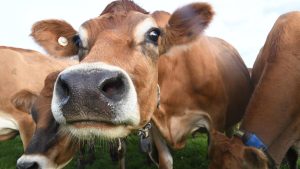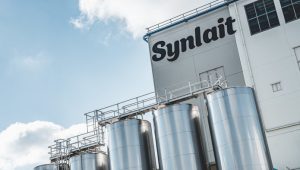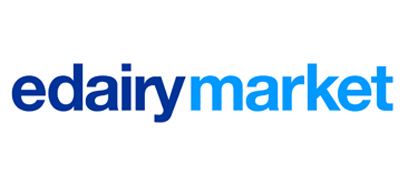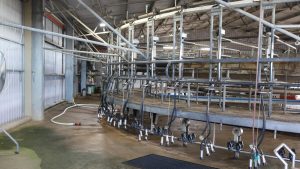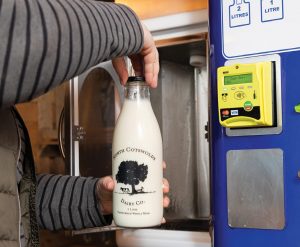
How Nestlé, Lactalis, and Saputo are reshaping global dairy trade through artificial intelligence—and what it means for exporters and spot markets
In today’s dynamic and competitive dairy market, artificial intelligence (AI) is no longer a futuristic buzzword. It’s a concrete tool that is redefining how prices are set, demand is forecasted, and logistics are optimized.
Industry giants like Nestlé, Lactalis, and Saputo are integrating AI into various parts of their operations, and its impact is already being felt across spot markets and export dynamics—especially in key producing countries.
Nestlé: Using AI to forecast demand and fine-tune pricing
Nestlé is leveraging AI to improve demand forecasting accuracy by over 20%, enabling smarter inventory management and reducing costs from overstocking or understocking. This allows the company to roll out dynamic pricing strategies based on real-time consumer behavior.
They’ve also developed NesGPT, an internal AI-powered assistant that enhances decision-making across supply chain, logistics, and commercial teams—bringing pricing closer to actual market behavior.
Lactalis: Smart automation for more efficient operations
Lactalis is rolling out AI and Big Data applications across its Spanish and Australian operations to:
- Monitor raw milk quality and animal welfare.
- Automate warehouse tasks using voice recognition and warehouse management systems (WMS).
- Streamline order processing and customer service through AI-based document scanning and chatbots.
These changes have reduced picking errors by over 30% and cut logistics costs by up to 20%, making the company more price-competitive in key markets like Brazil and Chile.
Saputo: AI for risk management, trading, and compliance
Saputo takes a strategic approach to AI adoption, focusing on areas such as:
- Financial analytics and market trend forecasting.
- Algorithmic trading and commercial risk modeling.
- Regulatory compliance and energy optimization across its supply chain.
This technology enables Saputo to offer stable, competitive pricing—even amid inflationary pressures in Argentina or under stricter environmental regulations in Chile and the U.S.
What about South America? A region on the verge of AI transformation
AI adoption is still in early stages in Argentina, Uruguay, Brazil, and Chile, but progress is being made:
- Conaprole (Uruguay) is piloting AI to monitor dairy performance and traceability in export-oriented farms.
- Piracanjuba and Embrapa (Brazil) are co-developing climate forecasting systems tailored to dairy production.
- In Chile, processor Quillayes Surlat is exploring AI for improving southern logistics.
- In the United States, cooperatives like Dairy Farmers of America are using geo-targeted consumption data for price modeling.
These efforts aim to reduce price volatility and align supply with real market demand, key factors for the Global Dairy Trade (GDT) platform and milk powder futures.
What does this mean for spot markets and exports?
📈 Less volatility, more accuracy
AI enables precise forecasting and real-time adjustments, reducing pricing noise in spot markets and improving trading reliability.
🌎 Competitive pressure on exporters
In import-heavy markets like Brazil, where milk powder imports from Argentina and Uruguay surged in 2024, AI-enhanced companies are offering tighter margins and faster response times.
⚠️ Growing tech gap
Exporters not yet using AI for pricing or forecasting risk falling behind global players like Fonterra or FrieslandCampina, who already use real-time market simulation tools.
Comparative table
| Company | AI Application | Direct Impact |
| Nestlé | Demand forecast, NesGPT AI assistant | Consumer-driven pricing |
| Lactalis | Logistics, quality control, automation | Lower logistics costs |
| Saputo | Finance, compliance, trading | Price stability and risk mitigation |
| LatAm Exporters | Climate models, traceability (early stage) | Gradual improvements, growing gap |
Final thoughts: From the farm to the algorithm
Milk pricing is no longer dictated solely by supply, demand, and weather. Increasingly, it’s shaped by algorithms trained on millions of real-time data points. Global dairy trade is moving toward radical efficiency, and exporters who ignore this trend may be left behind.
For our readers, this signals a paradigm shift: understanding how competitors use AI is now as essential as following GDT results or weather forecasts.
You can now read the most important #news on #eDairyNews #Whatsapp channels!!!
🇺🇸 eDairy News INGLÊS: https://whatsapp.com/channel/0029VaKsjzGDTkJyIN6hcP1K





